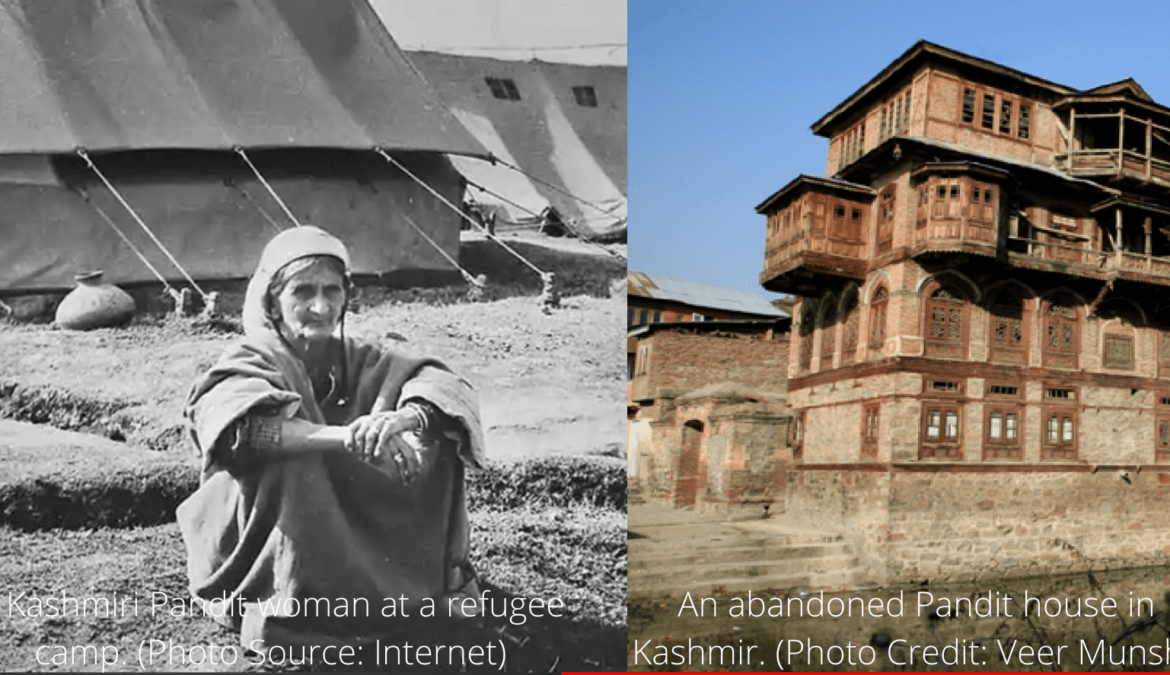The day when original residents of Kashmir left in droves to safeguard their lives and honour, humanity stood defeated yet again. The exodus of Kashmiri Pandits tattered the social fabric of Kashmir, otherwise, the land of saints and sages, writes Touseef Raina
Kashmiri Pandits accounted for around 4% of the population in Kashmir when militancy erupted in the Himalayan region. Pandits and Muslims were living a simple but safe life. Kashmir had earned respect and a name for its rich syncretic culture. And then, someone casted a spell that cursed the land of the Sufis. Gun culture further ruined it and changed it forever. Thirty years ago, on January 19th, when the KP community lost their claims to their homeland, it was the chilliest night, literally and figuratively. Even three decades later, the stories coming straight from the horse’s mouth sends a chill down our spine.
The Pandits were forced to leave their homeland for unknown destinations that night. They became soft targets. They struggled to survive in shanties. The opportunists exploited them. Suddenly, they found themselves scattered and displaced. Their scars are still fresh. Their quest to return to their motherland can be sensed every time we try to strike a chord with this “demographically lost community”.
Deep distrust and mistrust among the two communities gave rise to skepticism. The new generation of Kashmiri Muslims, born post exodus, was pumped with various theories about the exodus. They were not taught how Pandits suffered when they were threatened by militants to leave the valley. They were not taught about the derogatory slogans some radical elements chanted outside KP homes. Mid-1990’s born kids were ill-fed, brainwashed, and kept in dark.
The key narratives propagated are doctored. Kashmiri Muslims hold then Governor Jagmohan responsible for it. They believe that he, in connivance with Delhi engineered the exodus so that he could have a free hand in persecuting Kashmiri Muslims. On the other hand, Kashmiri Pandits term it as “genocide” and “ethnic cleansing”. Both the narratives are biased. The truth lies somewhere in between. The truth is, many-layered.
Violence had seeped into every crevice of life in the valley. Both the communities living in harmony for centuries together started doubting each other. It was a disastrous era. The ‘Azadi’ sympathizers who supported armed violence grew apprehensive of Kashmiri Pandits. KPs never supported violence. They have been a clerical class as a community, worked hard, and reached top-notch positions in the bureaucracy and other professions. We had wonderful actors, broadcasters, professors from the KP community. They were tagged as “Tehreek kay gaddar” and “Mukhbirs” or often as someone who were “naturally antagonistic” to the demand for Autonomy/ Azadi.
The increasing use of Islamic rhetoric in the political sloganeering like “yahan kya chalega Nizam-e-Mustafa” along with brutal day-light murders of prominent KP lawyers, judges, and other individuals created a fear psychosis in the minority community. Thus, the cordial relationship was broken into pieces like shards of glass. We failed to repair it until now, even after repeated attempts. Kashmiri Muslims failed to safeguard the minority community. Islam had taught us to take care of the minorities and not to harm them, but our gun-wielding men killed them in the name of Islam. We feel ashamed. This is the most unfortunate episode which will be inked with bold letters in the history of Kashmir.
The massacre of Pandits in Sangrampora, Budgam in March 1997, Gool in 1997, Wandhama Ganderbal in January 1998, and Nadimarg Pulwama in 2003 scared and angered Pandits beyond belief. Their anxiety level increased. Many died because of homesickness, heat-strokes, and hostile climatic conditions in different states of the country. This Human Rights violation goes unnoticed.
Some pseudo-political commentators and so-called analysts of the majority community in the valley secretly justify the exodus. Persecution based on their religious identity and political differences could be stopped, but the massive state machinery failed. The Indian state could not do enough to prevent this exodus from happening. The huge onus lies on them. And now, ironically, Kashmiri Pandits have pinned hopes on Delhi that their dignified return will be a reality. Now, the key question Delhi must answer at the earliest is: how long shall we wait for their return? Kashmiri Muslims must accept the mistake that we should not have let them go. We should collectively apologize to the community and hope that we will be forgiven.
Reconciliation: A smooth road ahead
Now, as the system is changing and Delhi is directly controlling Kashmir, it is a ripe time to stitch back the wounded relations by sewing up the fault lines. We need to make this bond everlasting and create a living example that two bodies can converge in the soul. We always have been living that way, but terrorism ruined it. Both the communities should work towards building confidence. Dialogue is the way forward. Credible civil society should come forward. The initial step should come from the majority community.
Now, as we sit across the table, we shall first adopt the “accept, forgive and emerge” approach. We have the finest example of Operation Blue Star with us. What happened with Sikhs in 1984 is a blot in our history. But they moved ahead. They are now part of the state machinery. They never played the victim card, and they didn’t let anyone use them as pawns. They emerged powerfully. It is difficult to forgive your killer, but it is more important to not allow history to repeat itself again in the name of the past. Hate and anger cannot be our fate. It is with the intention to support the need to create a safe space to mend relations and facilitate healing that the Kashmiri Muslim community should come forward and take the lead to build an inclusive agenda for scripting the future narrative of Kashmir’s reality.
Views are personal.



